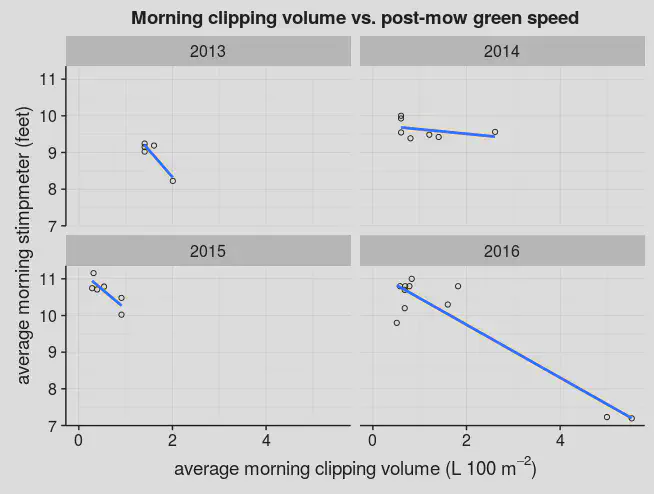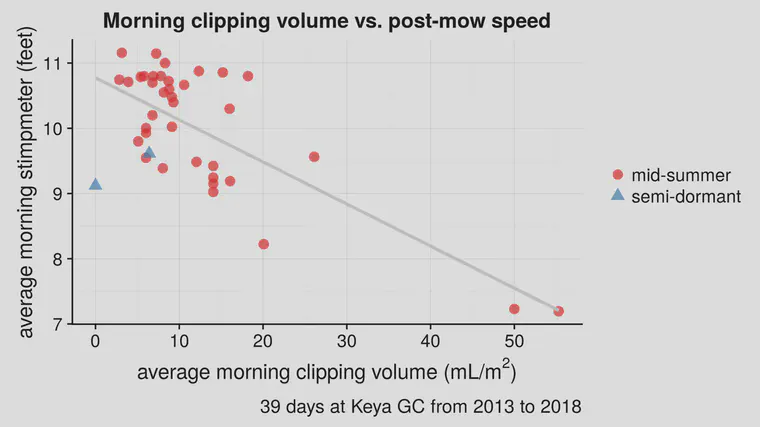I don't really need to show any data for this to be certain
Once upon a time,1 Paul Robertson asked if anyone was using a Pelzmeter to measure green speed. a long discussion followed, and the notifications on my Twitter account blew up.
My only contribution to that conversation was to share a link to an article by Richards et al. that shows the Pelzmeter and the Stimpmeter give the same results with “no differences in measurement repeatability.” Based on that research, I don’t see a reason to use a Pelzmeter instead of a Stimpmeter.
The conversation kept going, eventually touching on the quantity of clippings mown from the turf, which is some indication of how much the grass is growing, and what affect that growth would have on the green speed. I was reminded of a question someone sent me:
Have you correlated yield to speed? I have to assume that as yield changes speed changes also.
I replied:
In the big picture view, yes the clipping volume will be negatively correlated with speed. When clipping volume goes up, the speed has to go down.
I don’t really need to show any data for this to be certain. Take, for example, warm-season greens. Are they faster when growing in August (clipping volume is a positive number), or when dormant in February (clipping volume is 0)? They are lightning in February and of whatever speed they are in August.
I attach a chart with clipping volume in L/100 m2 (same as quarts per 1000 ft2) on the x axis and green speed on the y axis. That’s from a couple years of tournament week measurements in Japan. Speed is affected by other things but the clipping volume is sure to have some effect and I don’t think it will ever be in the direction of more growth = faster speeds.
The chart I shared included these data.

I looked at this again a couple years later and made another chart. These are data that show the green speed is faster with less growth, but one can come to this conclusion by thinking about this too.

Bill Kreuser showed data on bentgrass where the quantity of clippings was not related to the previous day’s stimpmeter measurement. Those data are surely correct. But if one thinks about the big picture view, of the range of growth rates one can have over the course of the year, and the range of green speeds, I think it makes sense to think of green speed as being affected by how much the grass is growing.
And this leads me to something else that I can’t help but mention. Bill can show data that demonstrate an interesting point; clipping yield was unrelated to green speed under the conditions of his experiment. I can show data that demonstrate an interesting point; clipping volume in the situation I describe is obviously associated with green speed. These experiments are not that hard to do; one could generate some kind of data about green speed and could make it show whatever one wanted to, if one planned it right, because there are a lot of factors that influence green speed! So why is it so difficult to find data about Si and green speed? I still think it is ridiculous that a stiffer leaf would make for a faster green speed.
I believe this conversation happened in June 2017. The original tweet has been deleted. ↩︎